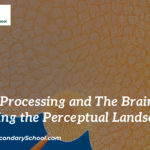Organization in the human body
The human body is a marvel of organization, a symphony of intricate systems working in unison to maintain life and vitality. From the microscopic realm of cells to the complex interplay of organs and tissues, organization is the fundamental principle that governs every aspect of our physiological existence. In this article, we delve into the remarkable organization that underpins the human body’s functioning and allows it to thrive in the face of constant change and challenge.
From Cells to Systems: The Hierarchical Organization
At the foundation of the human body’s organization lies the cell, the basic structural and functional unit of life. These microscopic entities collaborate, creating tissues with specialized functions. Tissues further come together to form organs, each carrying out specific tasks that contribute to the overall well-being of the body.
Beyond individual organs, the body’s organization extends to systems, which are clusters of organs that work harmoniously to perform complex functions. The circulatory system, for instance, involves the heart, blood vessels, and blood to ensure the transportation of oxygen, nutrients, and waste products throughout the body. The respiratory system, comprising the lungs and airways, facilitates the exchange of oxygen and carbon dioxide. Each system is a testament to the human body’s ability to organize and synchronize diverse components for the greater good.
Homeostasis: Balancing Act of Organization
Central to the body’s organization is the concept of homeostasis—a delicate balance maintained within the body’s internal environment. Whether it’s regulating body temperature, blood pH, or glucose levels, the body constantly adjusts to counteract fluctuations that could disrupt its functioning. This regulatory mechanism exemplifies the body’s remarkable organization in action, ensuring that conditions remain optimal for life to flourish.
Neurological Orchestra: Communication and Coordination
The nervous system exemplifies a pinnacle of organization in the human body. It comprises a vast network of neurons, each interconnected to transmit electrical signals. This complex system enables communication and coordination across the body. From sensing touch to interpreting emotions, from orchestrating muscle movements to regulating vital functions, the nervous system is a testament to the intricate organization required to maintain both internal and external harmony.
Emergence of Complexity: The Whole Greater than the Sum
What makes the human body’s organization even more intriguing is the concept of emergence. As systems and organs interact, a higher level of complexity arises that cannot be predicted solely from understanding the individual parts. Consciousness, cognition, and the rich tapestry of human experiences emerge from the interactions of countless cells and systems, creating a whole that transcends the sum of its parts.
Adaptation and Evolution: Organization Over Time
The human body’s organization has evolved over millions of years, shaped by the forces of natural selection. This process has led to structures and functions that optimize survival and reproduction. From the intricacies of the human eye to the adaptable immune system, the body’s organization has been honed through eons of selective pressure, resulting in the incredible diversity of life forms we see today.
Conclusion
Organization is the underlying principle that weaves the intricate fabric of the human body. It ensures that the body functions seamlessly, responding to challenges and maintaining equilibrium. From the cellular level to the complex systems that drive our existence, organization is a testament to the brilliance of nature’s design. As we continue to unravel the mysteries of the human body’s organization, we gain not only insights into our own biology but also a deeper appreciation for the complexity of life itself.





